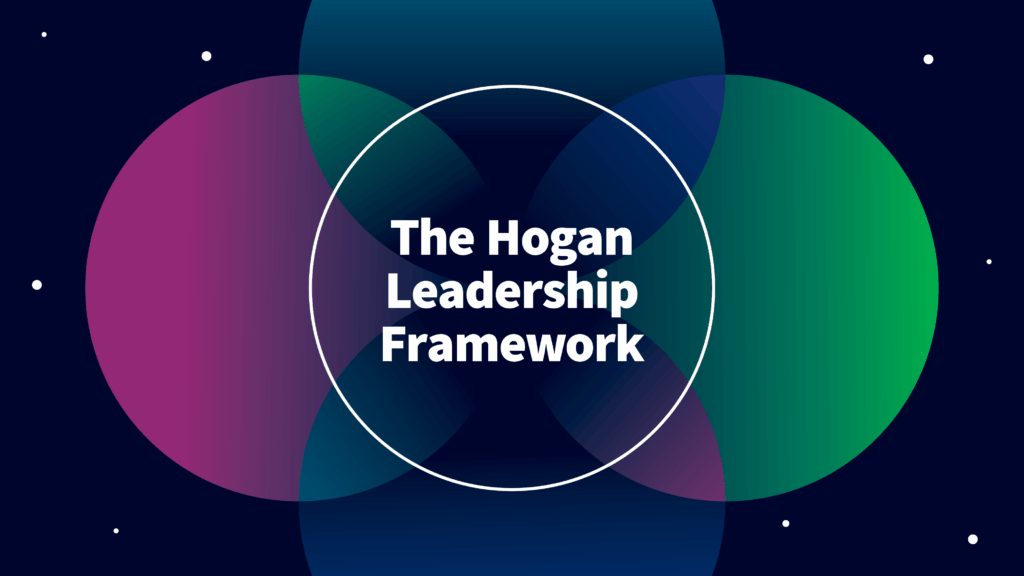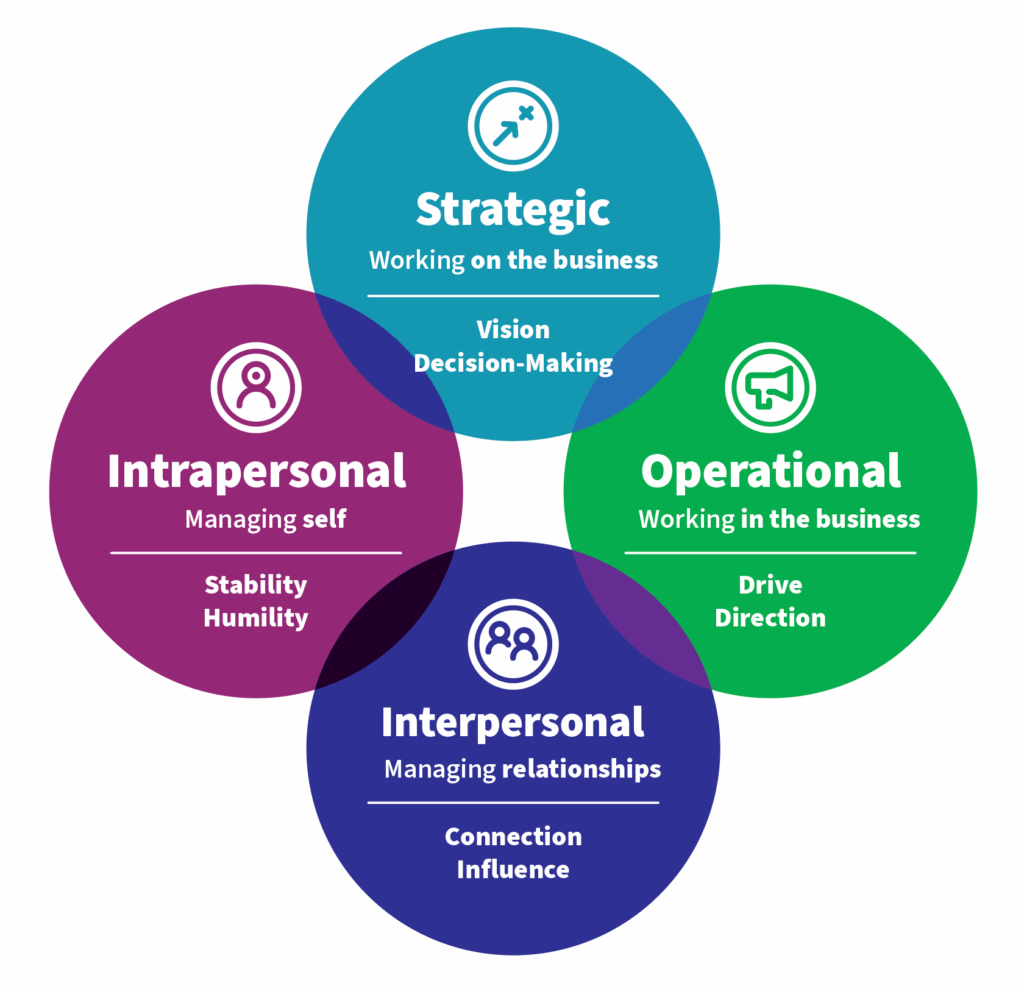
Why do some brilliant individual contributors fail spectacularly when promoted to leadership roles, while others with similar skills thrive? The answer isn't a matter of experience or technical expertise. What makes leaders successful (or not) is personality. For talent professionals who want to get better results from their leadership development initiatives, understanding this personality-performance connection is crucial.
Nearly all meaningful work is accomplished in teams, so effective leadership means building and maintaining high-performing teams. In other words, leadership is truly about followership. A leader’s ability to maximize team performance this depends on how their behavior impacts their current context, and behavior stems directly from personality.
This idea led us to develop a comprehensive framework for understanding and developing leaders. Based on decades of research, the Hogan Leadership Framework maps how personality characteristics predict leadership performance across all critical areas of responsibility.
Using data from our three core personality assessments, we can predict how a leader is likely to show up on an everyday basis—and under challenging circumstances. For instance, all leaders must plan for the organization's future. But are those plans more likely to be conservative or courageous? The degree to which a leader tends to push for change can affect the direction of the entire organization.
In this article, we’ll cover what makes leaders successful according to the Hogan Leadership Framework, how personality predicts leader performance, and how personality drives business results.
What Is the Hogan Leadership Framework?
Many leadership frameworks suggest that leaders can be classified into just a few simple categories. Development efforts based on this perspective of "leadership types" often fail because they don't acknowledge individual differences in leader personality. The Hogan Leadership Framework has far more nuance.
Our framework is built on the theory that personality has two critical viewpoints: identity and reputation. Identity refers to how leaders see themselves, while reputation is how others perceive them. For leadership assessment and development purposes, our framework focuses only on reputation—unlike identity, it’s observable and measurable. Understanding reputation is the key to leadership development efforts that get results.
Personality and values directly influence job performance and whether others perceive a leader as effective. The Hogan Leadership Framework considers the four key areas, called domains, in which personality drives performance: Strategic, Operational, Interpersonal, and Intrapersonal.
Domains of Leadership
The four domains of the Hogan Leadership Framework cover the full scope of all leadership styles. The framework maps a leader’s individual ways of relating to themselves and others (Intrapersonal and Interpersonal domains). It also maps a leader’s unique way of handling vision and execution (Strategic and Operational domains). Altogether, these behavioral tendencies paint a picture of a leader’s reputation.

Everyone has some type of leadership approach in each domain: there’s no such thing as not having any Operational abilities. Perhaps one leader’s Operational tendency is to organize, while another’s inclination is to improvise. Whether more structured or more flexible, an Operational style is only good or bad to the degree that it works well in its environment.
Dimensions and Behaviors of Leadership
The Hogan Leadership Framework breaks each domain into specific dimensions. Illustrated as a hierarchical diagram, the domains (at the highest level) branch into dimensions, and the dimensions branch into observable behaviors.

Let’s look at the Operational domain's dimensions as an example. Every leader has a style for setting expectations and establishing structure (Direction dimension) and for driving results and creating accountability (Drive dimension). A leader’s behavioral approach to driving results could range from realistic to relentless; their methods for creating accountability could range from permissive to demanding. Thus, a leader’s overall Drive might appear realistic and permissive, relentless and demanding, or somewhere in between on that continuum.
This theoretical framework for describing the relationship between reputation and leadership effectiveness informs our leadership development solution, the Hogan Leadership Experience. (More on this in a bit.) Next, we’ll explore exactly what makes leaders successful using this framework.
What Makes Leaders Successful?
Remember, the Hogan Leadership Framework focuses on differences in approach. The question isn’t whether leaders have an Operational leadership style, but how it usually shows up. Moreover, whether an approach is effective or not depends on the context. In some contexts, improvisation is more effective, and in others, organized structure is better for the team. It just depends.
Why Context Matters in Leadership
Let’s say you’ve got a high-potential marketing director whose behavioral approach to setting and pursuing goals is likely seen as realistic. That means they probably empower their team to establish their own goals but may miss opportunities to provide input and maximize their accomplishments. You also see that their leadership style of holding others responsible for results may seem permissive.
Broadly, this leader probably relies on the team to determine how to accomplish tasks and even which tasks to prioritize. In high-pressure or uncertain scenarios, they might not take an active role in distributing work and monitoring results, which could have a negative effect on team performance.
This mismatch between leader personality and situational demands is often why high-potential leaders derail, ROI from leadership development is poor, and succession plans fail. Understanding how a leader tends to behave in everyday circumstances and under stress is critical for effective development planning.
What leadership approach is most effective? The one that’s best for the context of the team, organization, and industry.
How to Improve Leadership Performance
Fortunately, leadership development can help leaders of all personality styles to learn how to maximize their strengths, overcome their challenges, and deliver results successfully. Based on the point of view of the Hogan Leadership Framework, the Hogan Leadership Experience, or HLX, gives leaders a shortcut to the actionable feedback they need, specific to their unique circumstances. HLX uses the scientific rigor of Hogan's personality assessments and delivers results in business language to help leaders understand their reputations. With a certified coach's support, leaders prioritize development objectives based on their unique contexts, identify actionable steps to adapt behavior, and track progress.
The marketing director’s realistic, permissive methods for driving results could be ideal in some settings. On the other hand, in a high-pressure startup or during the uncertainties of an acquisition, that leader’s tendencies could hinder their team’s performance. The marketing director's approach to Direction doesn’t show a preference for close supervision, which could frustrate a goals-oriented team that seeks more oversight.
Using HLX empowers talent professionals to create development plans rooted in personality science. For instance, the marketing director demonstrates a specific growth area: difficulty pressing for priorities in stressful situations. Insights like this allow talent professionals to design targeted development objectives around keeping goals and progress visible to the team.
How Personality Drives Business Results
Many leadership development programs are broken. They’re subjective and biased instead of objective and fair. They take a one-size-fits-all approach. They’re aspirational instead of actionable. They overlook what makes leaders successful: personality's impact on performance.
The Hogan Leadership Framework correctly places personality at the head of leadership performance. HLX uses this framework to enable talent professionals to solve real business challenges with a science-driven, individualized approach to leadership development.
With HLX, leaders are guided by an expert coach to make meaningful, long-term behavioral change that improves organizational outcomes. Throughout the experience, leaders build strategic self-awareness. This is a complex form of self-awareness that emphasizes understanding one's own reputation. It matters deeply because leader behavior creates ripple effects on team performance and business results. Strategic self-awareness also helps leaders know when and how to adapt their typical approach, such as adopting a more relentless pursuit of goals.
When talent professionals understand the personality-performance connection, they can finally deliver what organizations need: leaders who adapt their natural style to meet situational demands, build high-performing teams, and drive measurable business results. This is leadership development that actually works.